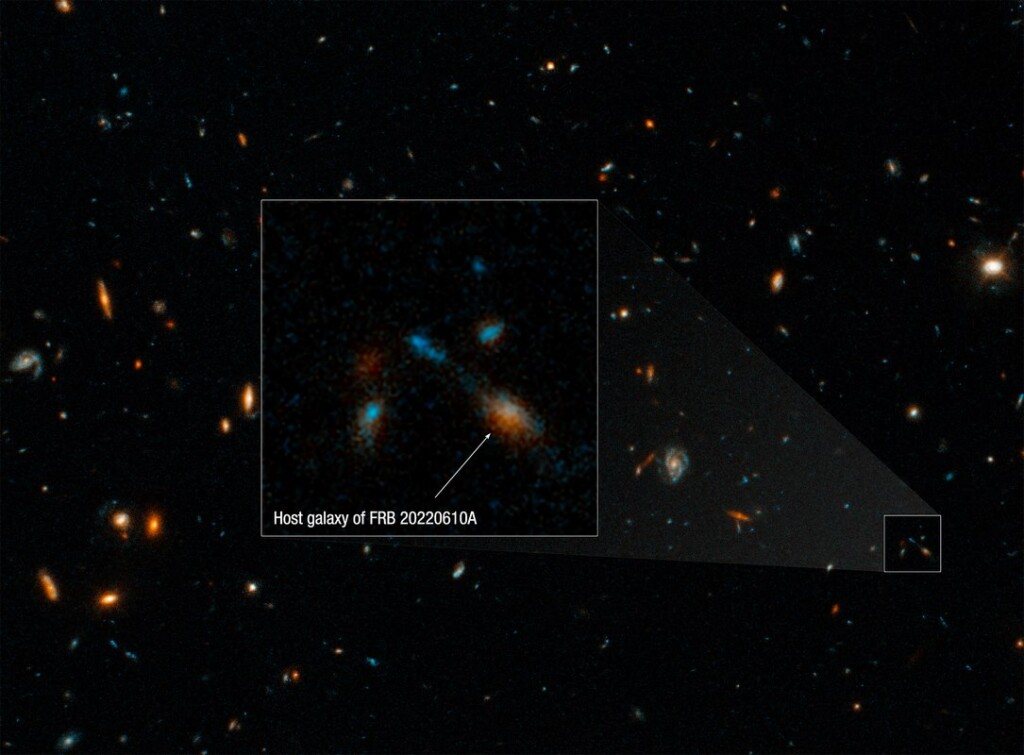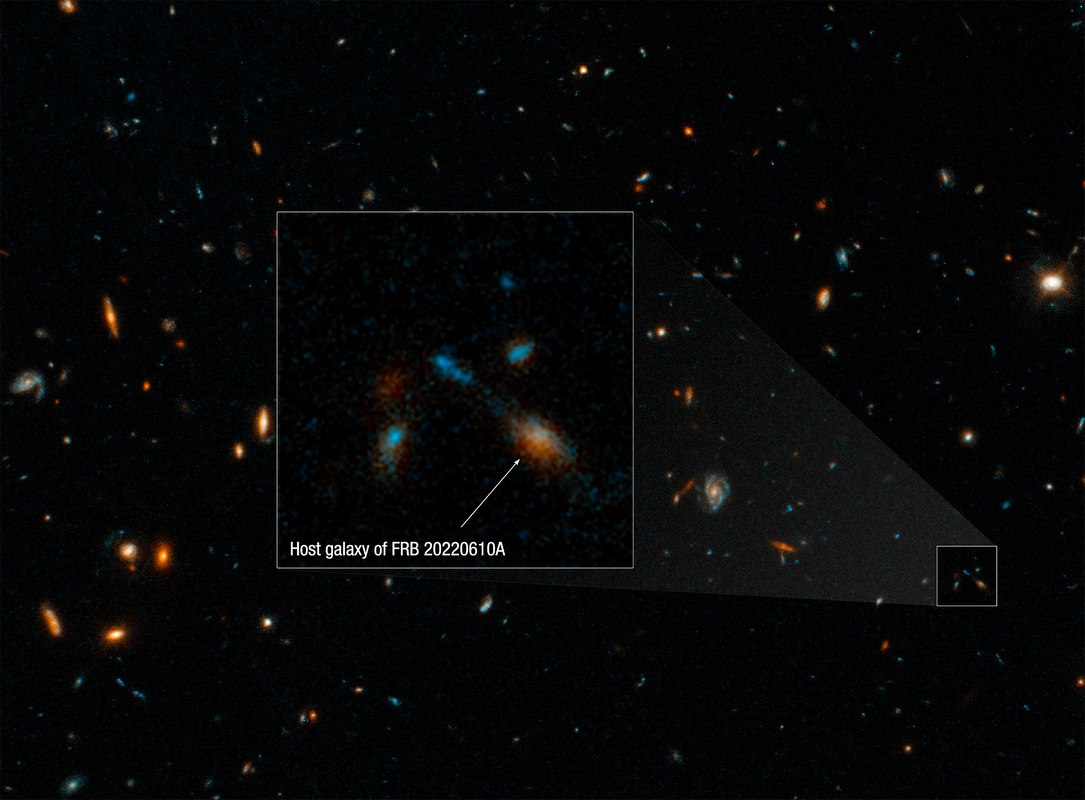
A burst of radio waves from deep space—the largest ever detected—was found to have originated from a collection of tighly-packed galaxies which may be interacting in ways never seen before, a new study finds.
Called an “FRB” or a fast radio burst, astronomers from Northwestern University detected the most distant, oldest, and most energetic FRB ever recorded. Dubbed FRB 20220610A, it originated when the universe was just 5 billion years old.
First discovered in 2007, fast radio bursts last only a millisecond. Some experts have suggested they may be from an extraterrestrial life form trying to contact other civilizations, because we humans use radio waves to communicate with each other.
But the exact cause and origins of FRBs still remain unconfirmed.
Initially, the Northwestern team thought the FBR originated near an amorphous object which they believed to be either a single, irregular galaxy or a group of three distant galaxies.
But thanks to images from NASA’s Hubble Space Telescope, the team have discovered that the FBR’s birthplace is no less than seven galaxies packed together in such close proximity that they could fit inside our own Milky Way.
The images also suggest that the collection of galaxies are interacting with one another, giving both a possible explanation for the FRB and the potential for scientists to witness a galactic merger.
These conditions are incredibly rare, and the lead author on the paper, Alexa Gordan, said that Hubble’s help is the only reason they were able to expand on their record-breaking discovery, and put any context of use around it.
“It’s these types of environments—these weird ones—that drive us toward a better understanding of the mystery of FRBs,” she told her university press.
“Despite hundreds of FRB events discovered to date, only a fraction of those have been pinpointed to their host galaxies,” said study co-author Yuxin Dong, an astronomy Ph.D. “Within that small fraction, only a few came from a dense galactic environment, but none have ever been seen in such a compact group. So, its birthplace is truly rare.”
Although up to 1,000 FRBs have been documented since they were first discovered in 2007, astronomers have yet to reach a consensus on the possible mechanisms that generate them.
MORE GALAXTIC MYSTERIES: Astronomers Detect Radio Pattern ‘Like a Heartbeat’ From a Galaxy Far Away
It’s generally agreed that FRBs must involve a compact object such as a black hole or a neutron star, but the exact source behind them remains stubbornly uncertain.
“There are some signs that the galaxies are ‘interacting,'” said study co-author Wen-Fai Fong, an associate professor of physics and astronomy. “In other words, they could be trading materials or possibly on a path to merging. This interaction could trigger bursts of star formations.”
Northwestern University’s discovery could therefore be a step towards understanding the mysterious phenomena of FBRs, which could in turn be a step towards understanding the true nature of the universe itself.
KEEP EXPLORING THE UNIVERSE: Astronomers May Have Spotted the First Known Exoplanet in Another Galaxy
“This,” Fong explained, “is because when FRBs finally meet our telescopes they have already travelled for billions of years from the distant, early universe. During this cross-universe odyssey, they interact with material along the way…[and] from a time delay in the FRB signal itself, we can measure the sum of all of these contributions.”
To continue to probe FRBs and their origins, astronomers need to detect and study more of them. And with technology continually becoming more sensitive, the team at Northwestern University believes that more detections—and possibly the prospect of capturing incredibly faint FRBs—are right around the corner.
SHARE This Awesome Discovery In A Galaxy Far, Far Away…




















